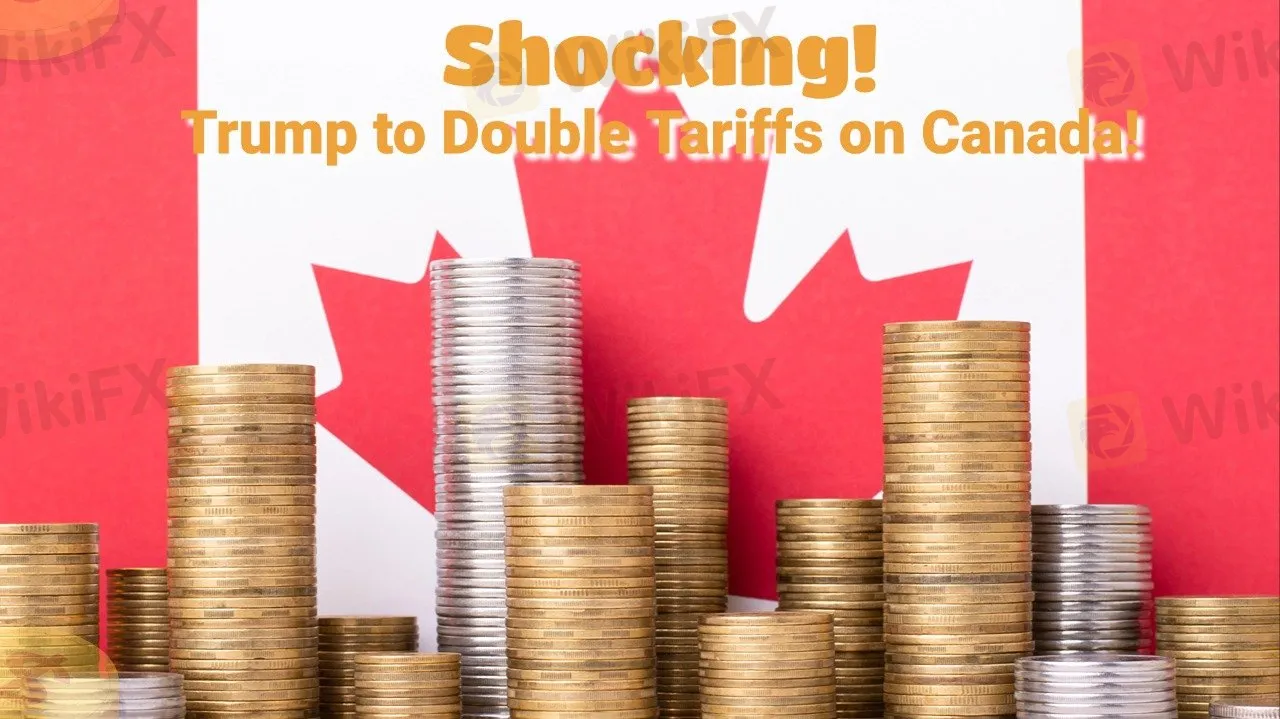简体中文
繁體中文
English
Pусский
日本語
ภาษาไทย
Tiếng Việt
Bahasa Indonesia
Español
हिन्दी
Filippiiniläinen
Français
Deutsch
Português
Türkçe
한국어
العربية
Shocking! Trump to Double Tariffs on Canada!
Abstract:Trump announced a tariff hike on Canadian steel and aluminum to 50%, shaking the markets. The Canadian stock market took a hit, the Canadian dollar plummeted, and U.S. steel and aluminum stocks surged, triggering strong reactions from all sides.

U.S. President Donald Trump recently declared an additional 25% tariff on Canadian steel and aluminum imports, bringing the total tariff rate to 50%.
This decision was made in response to Ontario‘s move to impose a 25% tax on electricity exports to the U.S. Trump stated that the tariff increase was a countermeasure against Canada’s trade policies and warned that if Canada did not withdraw its tariffs, the trade war could escalate further.
The announcement sent shockwaves through global markets. Both U.S. and Canadian stock markets fell, the Canadian dollar plunged, while U.S. steel and aluminum stocks surged. Later, Trump hinted at a possible concession on the tariff issue, briefly easing market concerns.
By 4 p.m. Eastern Time, the White House confirmed that the existing 25% tariffs on steel and aluminum would take effect at midnight, though no details were provided on the enforcement of the 50% tariff.
Canada responded firmly, refusing to yield to Trump‘s pressure and even threatening to cut off electricity supplies to the U.S. Former U.S. Treasury Secretary Larry Summers criticized the policy as “self-inflicted harm,” warning that it could worsen recession risks. Meanwhile, the UK government stated that it would not respond to Trump’s tariff threats but would continue seeking an exemption.
Overall, Trumps decision not only strained U.S.-Canada relations but also created economic and political uncertainty on a global scale.
Disclaimer:
The views in this article only represent the author's personal views, and do not constitute investment advice on this platform. This platform does not guarantee the accuracy, completeness and timeliness of the information in the article, and will not be liable for any loss caused by the use of or reliance on the information in the article.
Read more

Never Heard of Dynasty Trade? Here's Why You Should Be Worried
Have you heard this name before? No , it’s time you do because staying unaware could cost you. This platform is currently active in the forex trading and has been linked to several suspicious activities. Even if you’ve never dealt with it directly, there’s a chance it could reach out to you through ads, calls, messages, or social media. That’s why it’s important to know the red flags in advance.

WEEKLY SCAM BROKERS LIST IS OUT! Check it now
If you missed this week's fraud brokers list and are finding it difficult to track them one by one — don’t worry! We’ve brought together all the scam brokers you need to avoid, all in one place. Check this list now to stay alert and protect yourself from fraudulent brokers.

Catch the Latest Update on BotBro & Lavish Chaudhary
BotBro, an AI-based trading platform, became popular in India in 2024—but for negative reasons. Its founder, Lavish Chaudhary, who gained a huge following by promoting it heavily on social media. Since then, he has become well-known, but for many controversies. Let’s know the latest update about Botbro & Lavish Chaudhary.

Trading Other People’s Money | What Prop Firms Don’t Tell You
Proprietary (prop) trading firms have become increasingly popular. They give traders the chance to trade with larger amounts of money without risking their own savings. For many, this sounds like the perfect opportunity to grow faster and earn more. But while the benefits are appealing, there are also risks and hidden rules that traders must understand before joining a prop firm.
WikiFX Broker
Latest News
Is Your Forex Strategy Failing? Here’s When to Change
FSMA Warns That Some Firms Operate as Pyramid Schemes
Apex Trader Funding is an Unregulated Firm | You Must Know the Risks
Sigma-One Capital Scam? Investors Say They Can’t Withdraw Funds
Federal Reserve likely to hold interest rates steady despite pressure from Trump. Here's what that means for your money
WEEKLY SCAM BROKERS LIST IS OUT! Check it now
Intel drops 9% as chipmaker's foundry business axes projects, struggles to find customers
Palantir joins list of 20 most valuable U.S. companies, with stock more than doubling in 2025
Textiles to whisky: U.K.–India 'historic' deal is set to boost bilateral trade by over $34 billion a year
Thailand-Cambodia border clashes: Cambodia's economy has more to lose, analysts say
Currency Calculator


